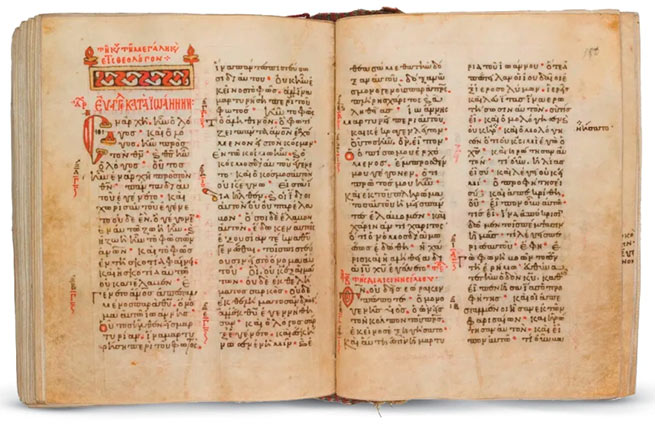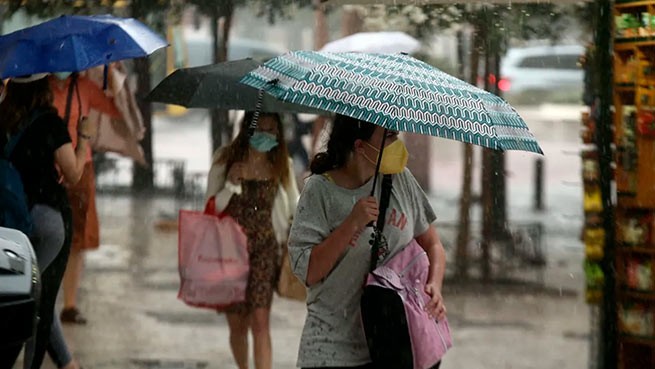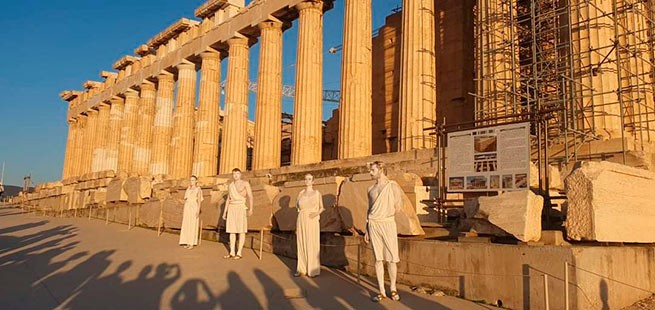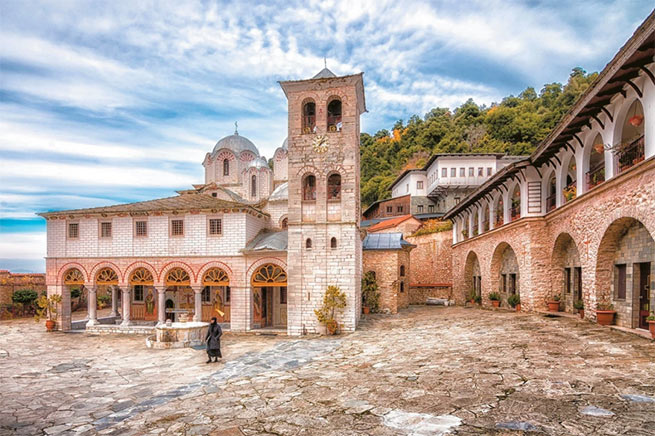In 2008, the Swann auction gallery in Manhattan sold three 16th and 17th century Greek-language manuscripts to an antiquities dealer who returned them two years later after concluding they might have been stolen.
The dealer was compensated, but the auction house, according to its employees, could not contact the person who gave these items for sale. So they lay on the shelf for more than ten years, lost in the hustle and bustle of everyday affairs.
However, three months ago, the manuscripts surfaced when Swann’s CFO was inspecting his office before renovations. There on the shelf, in a long-forgotten plastic bag, were manuscripts believed to have been stolen from a Greek monastery at the height of the First World War.
H Μονή Εικοσιφοινίσσης (Iconoclast Monastery)
They are believed to have been lost in 1917 when Bulgarian soldiers stole nearly 900 items from the stauropegial monastery. Virgin of Ikosifonissaoften called Kosinitsa, in northern Greece.
The manuscripts will be sent back to the monastery and their return will be celebrated Friday at a repatriation ceremony in Lower Manhattan. After a ceremony organized by the Greek Orthodox Archdiocese of America, Archbishop Elpidophoros of America plans to travel to Constantinople to hand over the manuscripts to Ecumenical Patriarch Bartholomew, head of the Eastern Orthodox Church. From there, the items will return to Kosinitsa.
“It is a blessing for the monastic sisterhood of the Monastery of the Theotokos Eikosifoinissa to see the contents of their former library gradually returned to them,” Archbishop Elpidophoros said in a statement. He said the church hopes that other organizations that have manuscripts stolen from the monastery will also return them.
The extent of the systematic looting during World War II by Nazi forces tends to overshadow the fact that works of art were regularly looted and during other conflicts. Roman generals Alexander the Great and Napoleon Bonaparte are known to have stolen art during military campaigns, says Leila Amineddoleh, a lawyer who specializes in arts and heritage law and acts as a consultant to lawyers seeking the return of documents.
And while some looting is carried out in an organized manner, in the name of the empire and its aspirations, Amineddoleh says the turmoil of war also serves as a front for theft by fighters who act on their own rather than under orders.
“Sometimes looting is done from nation to nation,” she says. “Sometimes it’s done by individuals who commit well-meaning crimes.”
The looting of Kosinitsa seems to fall into the second category. The monastery was founded around the fifth century and is said to have a collection of some 1,300 volumes by the 18th century, an Eastern Orthodox Church official wrote in a 2015 letter. He added that in 1917 the monastery was attacked by “marauding Bulgarian partisans” who plundered the most valuable library.
Four days after the attack, a letter from a local official to the Greek delegation for foreign affairs in Sofia stated that about 60 bandits had entered the monastery, attacked the people, and used 24 mules to carry out booty.
After the yellowed manuscripts were rediscovered at a Swann auction, they landed on the desk of Devon Eastland, Sr. specialist in early printed books at the auction house.
One of them, entitled “The Memorial List of the Venerable and Patriarchal Monastery of Our Most Holy Lady Theotokos and Ever-Virgin Mary in Kosinitsa”, contains a list of former monks of the monastery and people who made donations to the monastery – names that the priest included in a special prayer after the liturgy. Another document contained the signatures of the monastery’s officials.
“I wanted to find out where the manuscripts should be given,” Eastland said in a telephone interview. “If they were stolen, they should be returned to those from whom they were stolen.”
According to Eastland, his task was made easier by research notes sent by an antiquities dealer, which said that the inscriptions inside the manuscripts indicate that their source is Kosinitsa. After reading these notes, Eastland wrote to George Tsogarakis, General Counsel for the Greek Orthodox Archdiocese of America, telling him about the manuscripts.
Tsougarakis, in private practice, sued Princeton University on behalf of the monastery in 2018, alleging that in the collections of the educational institution were manuscripts stolen from Kosinitsa. The university, in turn, claims that the study of the origin of the manuscripts showed that they “were not stolen.” The litigation is ongoing.

The parchment gospel, stolen from the monastery of Ikosifoinisis, is one of the oldest surviving Greek manuscript gospels in the world. Miniature, it includes lithographs of the Evangelists and is written in two columns of 27 lines each.
Over the past few years, the Museum of the Bible in Washington and the Lutheran Theological School in Chicago returned items that can be attributed to those stolen in 1917 from Kosinitsa. The Morgan Library and Museum in New York said in 2021 that it had agreed to loan one of the 12th-century books to the monastery.

Bulgarian soldier Vladimir Sis, who stole and sold the Gospel.







More Stories
Making a mockery of the Acropolis for the sake of tourism
How Plato spent his last night – what the found papyri showed
Eurovision 2024: the first rehearsal of Marina Satti in Malmö has ended